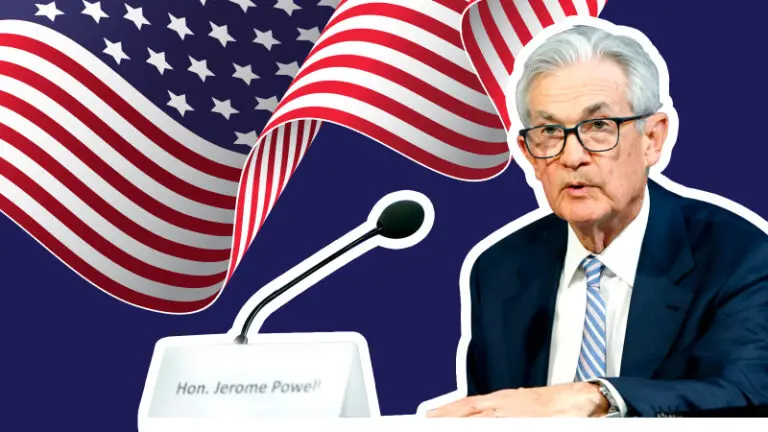
ANNUAL MONETARY RETREAT TAKES OFF
The annual central banker’s retreat at Jackson Hole, Wyoming is one of the most awaited events for global monetary policy. On Friday, when Jerome Powell spoke at Jackson Hole, the markets were expecting some signals on the rates front. While Powell desisted from giving any clear hints, his statement on the twin challenges of inflation and unemployment were an indication that the Fed was starting to give greater weightage to unemployment and consumer spending risk. That has opened up the possibility that the Fed may cut rates by 25 bps in September. However, the picture beyond September continues to be rather hazy. Here is what Jerome Powell said at Jackson Hole.
HOW TARIFFS HAVE CHANGED THE US MACRO NARRATIVE
When Powell had last addressed Jackson Hole in August 2024, the rates were still in the range of 5.25% to 5.50%. Between September 2024 and December 2024, the Fed cut rates by 100 bps after a temporary scare from the jobs data. However, what changed the narrative was the reciprocal tariffs mooted by Donal Trump on select countries; India being at the receiving end of it. The tariffs created concerns at two levels. On the one hand, it was supposed to raise import prices and thus push up inflation. That made a case for status quo on rates. However, there were also concerns that the tariffs would slow job creation and impact consumer spending. That made a case for rate cuts. At the end of the day, the rate decision would have to be based on which factor was more dominant.
WHY LABOUR MARKET NEEDS A CLOSER LOOK
If you look at unemployment from a longer term perspective, it is up nearly 100 bps from the lows of 2023. That sort of situation has only been seen during recessions, which does underline that there are underlying problems in the labour data. Year 2025 has seen new challenges since Trump took over the Presidentship of the US. For instance, significantly higher tariffs are putting pressure on jobs and consumer spending. In addition, tighter immigration policies led to an abrupt slowdown in labour force growth, which kept the labour market undersupplied. The full impact of these variables on the labour market is yet to fully manifest, and that remains a concern.
The July jobs data highlights the weakness in the jobs situation. Not only has the unemployment rate gone up 10 bps to 4.2%, but the non-farm payroll additions have dropped from an average of 168,000 a month in 2024 to just 35,000 between May and July 2025. However, since the demand and supply of labour has been trending down, it has kept wages static. However, the labour market has reached a point where it needs careful handling and protection from any signs of a slowdown.
IS INFLATION STILL THE DOMINEERING CONCERN?
Clearly, inflation has manifested in the US and remains a key concern. The PCE inflation at 2.6% is well above the 2.0% target of the US Fed. Core inflation has been very sticky at higher levels of 2.9%. The impact of tariffs are clearly visible on inflation. For now, the hope is that the impact on inflation would be a one-time effect, but it is entirely likely that the impact could also be structural. That means, the process of inflation adjusting to the higher tariffs could persist longer than expected. There is also the risk that the situation could spike inflation expectations and, in the process, drag actual inflation higher.
WHAT IS THE OUTLOOK FOR SEPTEMBER MONETARY POLICY?
That is the million dollar question. For the short term, it looks like the inflation risks are more prominent, although the gravity of the jobs problem is also building up. Thanks to the rate cuts between September and December 2024, the policy rate at 4.25%-4.50% is already 100 bps closer to neutral rate. However, after holding status quo for the first 8 months of 2025, the balance may be just about shifting in favour of curbing a surge in the unemployment levels and the need to improve the non-farm payroll additions to around 100,000 a month to sustain growth. That may just about make a case for a 25 bps rate cut in September, although not much can be said about the journey beyond that!
Related Tags

![]() IIFL Customer Care Number
IIFL Customer Care Number
(Gold/NCD/NBFC/Insurance/NPS)
1860-267-3000 / 7039-050-000
![]() IIFL Capital Services Support WhatsApp Number
IIFL Capital Services Support WhatsApp Number
+91 9892691696
IIFL Capital Services Limited - Stock Broker SEBI Regn. No: INZ000164132, PMS SEBI Regn. No: INP000002213,IA SEBI Regn. No: INA000000623, SEBI RA Regn. No: INH000000248, DP SEBI Reg. No. IN-DP-185-2016, BSE Enlistment Number (RA): 5016
ARN NO : 47791 (AMFI Registered Mutual Fund Distributor), PFRDA Reg. No. PoP 20092018

This Certificate Demonstrates That IIFL As An Organization Has Defined And Put In Place Best-Practice Information Security Processes.